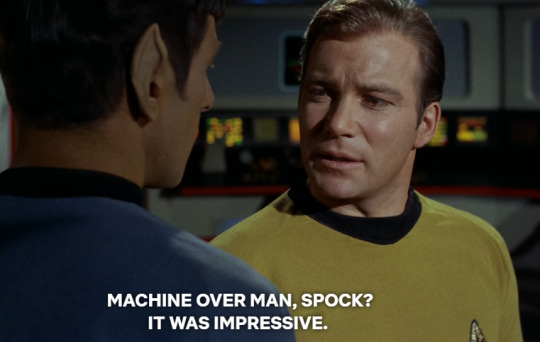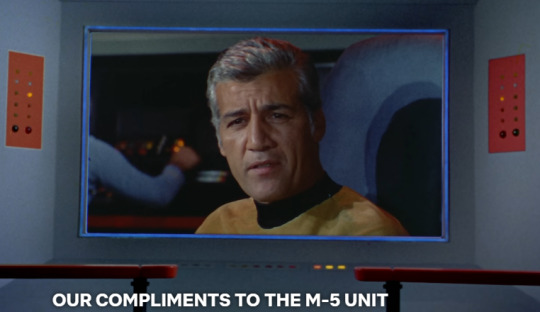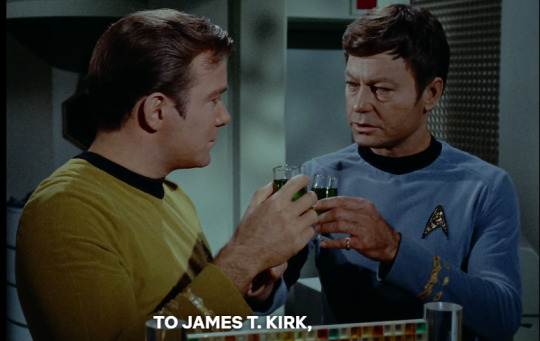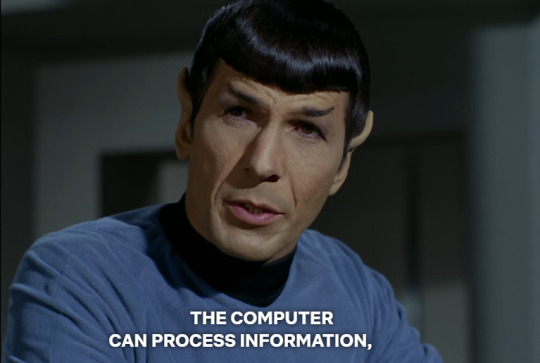#The Future of Computer Vision
Explore tagged Tumblr posts
Text

199 notes
·
View notes
Text
Yes the use of daisy bell is a reference to the first song ever sang by a computer, but consider… Hal only knows very old songs. I mean 1890s-1930s.
Have you considered Let me call you sweetheart? Equally pining and sweet but it’s also been used and labeled as “creepy” in the modern age.
#do you see the vision#yes having him know 2000s songs is funny but also#‘computer from the future only knows songs from the far past’ is hhhhghh#2001 a space odyssey#2001 aso#hal 9000#dave bowman#halman? sort of#daisy bell#2001 meta
50 notes
·
View notes
Text
Shaping a Sustainable Future by Advancing ESG Goals
U3Core application of DigitalU3 redefines how organizations approach Environmental, Social, and Governance (ESG) strategies by combining real-time data, advanced analytics, and AI-powered automation
Email us at: [email protected]
youtube
#Smart Cities#Green Future#Sustainable operations#Technology for Sustainability#Asset Management#Digital Transformation#Computer Vision#AI for Sustainability#IoT for Sustainability#Youtube#intel
3 notes
·
View notes
Text

watch!
another dystopian future vision created by baze.djunkiii
2 notes
·
View notes
Text
AN ANT IN MY LAPTOP. GET OUT OF THERE
#i cant keep doing this guys im holding on my a thread i can see visions from the future of myself losing my fucking marbles#why are there ants in my computer? does god not love me?
0 notes
Text
Vision in Focus: The Art and Science of Computer Vision & Image Processing.
Sanjay Kumar Mohindroo Sanjay Kumar Mohindroo. skm.stayingalive.in An insightful blog post on computer vision and image processing, highlighting its impact on medical diagnostics, autonomous driving, and security systems.
Computer vision and image processing have reshaped the way we see and interact with the world. These fields power systems that read images, detect objects and analyze video…
#AI#Automated Image Recognition#Autonomous Driving#Collaboration#Community#Computer Vision#data#Discussion#Future Tech#Health Tech#Image Processing#Innovation#Medical Diagnostics#News#Object Detection#Privacy#Sanjay Kumar Mohindroo#Security Systems#Tech Ethics#tech innovation#Video Analysis
0 notes
Text
Explore the world of Night Vision Tech: its history, applications, and future innovations. Uncover how this groundbreaking technology shapes industries and solves puzzles alike.
#artificial intelligence#healthcare#news#robotics#technology#tech#energy#future#ai art#ai generated#night vision#night vale#night view#future technology#computing#computer#gadgets#futurism
1 note
·
View note
Text
New training approach could help AI agents perform better in uncertain conditions
New Post has been published on https://thedigitalinsider.com/new-training-approach-could-help-ai-agents-perform-better-in-uncertain-conditions/
New training approach could help AI agents perform better in uncertain conditions


A home robot trained to perform household tasks in a factory may fail to effectively scrub the sink or take out the trash when deployed in a user’s kitchen, since this new environment differs from its training space.
To avoid this, engineers often try to match the simulated training environment as closely as possible with the real world where the agent will be deployed.
However, researchers from MIT and elsewhere have now found that, despite this conventional wisdom, sometimes training in a completely different environment yields a better-performing artificial intelligence agent.
Their results indicate that, in some situations, training a simulated AI agent in a world with less uncertainty, or “noise,” enabled it to perform better than a competing AI agent trained in the same, noisy world they used to test both agents.
The researchers call this unexpected phenomenon the indoor training effect.
“If we learn to play tennis in an indoor environment where there is no noise, we might be able to more easily master different shots. Then, if we move to a noisier environment, like a windy tennis court, we could have a higher probability of playing tennis well than if we started learning in the windy environment,” explains Serena Bono, a research assistant in the MIT Media Lab and lead author of a paper on the indoor training effect.
The researchers studied this phenomenon by training AI agents to play Atari games, which they modified by adding some unpredictability. They were surprised to find that the indoor training effect consistently occurred across Atari games and game variations.
They hope these results fuel additional research toward developing better training methods for AI agents.
“This is an entirely new axis to think about. Rather than trying to match the training and testing environments, we may be able to construct simulated environments where an AI agent learns even better,” adds co-author Spandan Madan, a graduate student at Harvard University.
Bono and Madan are joined on the paper by Ishaan Grover, an MIT graduate student; Mao Yasueda, a graduate student at Yale University; Cynthia Breazeal, professor of media arts and sciences and leader of the Personal Robotics Group in the MIT Media Lab; Hanspeter Pfister, the An Wang Professor of Computer Science at Harvard; and Gabriel Kreiman, a professor at Harvard Medical School. The research will be presented at the Association for the Advancement of Artificial Intelligence Conference.
Training troubles
The researchers set out to explore why reinforcement learning agents tend to have such dismal performance when tested on environments that differ from their training space.
Reinforcement learning is a trial-and-error method in which the agent explores a training space and learns to take actions that maximize its reward.
The team developed a technique to explicitly add a certain amount of noise to one element of the reinforcement learning problem called the transition function. The transition function defines the probability an agent will move from one state to another, based on the action it chooses.
If the agent is playing Pac-Man, a transition function might define the probability that ghosts on the game board will move up, down, left, or right. In standard reinforcement learning, the AI would be trained and tested using the same transition function.
The researchers added noise to the transition function with this conventional approach and, as expected, it hurt the agent’s Pac-Man performance.
But when the researchers trained the agent with a noise-free Pac-Man game, then tested it in an environment where they injected noise into the transition function, it performed better than an agent trained on the noisy game.
“The rule of thumb is that you should try to capture the deployment condition’s transition function as well as you can during training to get the most bang for your buck. We really tested this insight to death because we couldn’t believe it ourselves,” Madan says.
Injecting varying amounts of noise into the transition function let the researchers test many environments, but it didn’t create realistic games. The more noise they injected into Pac-Man, the more likely ghosts would randomly teleport to different squares.
To see if the indoor training effect occurred in normal Pac-Man games, they adjusted underlying probabilities so ghosts moved normally but were more likely to move up and down, rather than left and right. AI agents trained in noise-free environments still performed better in these realistic games.
“It was not only due to the way we added noise to create ad hoc environments. This seems to be a property of the reinforcement learning problem. And that was even more surprising to see,” Bono says.
Exploration explanations
When the researchers dug deeper in search of an explanation, they saw some correlations in how the AI agents explore the training space.
When both AI agents explore mostly the same areas, the agent trained in the non-noisy environment performs better, perhaps because it is easier for the agent to learn the rules of the game without the interference of noise.
If their exploration patterns are different, then the agent trained in the noisy environment tends to perform better. This might occur because the agent needs to understand patterns it can’t learn in the noise-free environment.
“If I only learn to play tennis with my forehand in the non-noisy environment, but then in the noisy one I have to also play with my backhand, I won’t play as well in the non-noisy environment,” Bono explains.
In the future, the researchers hope to explore how the indoor training effect might occur in more complex reinforcement learning environments, or with other techniques like computer vision and natural language processing. They also want to build training environments designed to leverage the indoor training effect, which could help AI agents perform better in uncertain environments.
#ADD#agent#agents#ai#ai agent#AI AGENTS#Algorithms#approach#artificial#Artificial Intelligence#Arts#author#board#Capture#computer#Computer Science#Computer science and technology#Computer vision#conference#court#deployment#engineers#Environment#explanation#fuel#Future#game#games#harvard#household
0 notes
Text
#AI Applications#AI Technology#Computer Vision#Ethical AI#facts#Future of AI#life#Machine Learning#Podcast#Privacy and AI#serious#straight forward#Surveillance Technology#truth#upfront#Visual Recognition#website
0 notes
Link
#market research future#computer vision in healthcare#healthcare computer vision#computer vision in radiology#computer vision in health
0 notes
Text
sub 15 ms latency in-flight CV pipeline
37 notes
·
View notes
Text
SITA and IDEMIA set to take airport operations into the future with computer vision innovation
The expanded collaboration builds on their initial agreement to improve border management, now focusing on baggage management and operational efficiency in airports. Following the recent announcement of their collaboration to enhance digital travel credentials and biometric solutions in border management, SITA, the global leader in air transport technology, and IDEMIA Public Security, a world…
1 note
·
View note
Text
'the ultimate computer' aka uncannily precise vision of the future in which starfleet wants to replace jim with ai but spock and bones are not having it






























I am going feral at all the times ai is being a menace in this show and how accurate it is to the bs present we're living in
#star trek#star trek tos#james t kirk#jim kirk#spock#leonard bones mccoy#leonard mccoy#the ultimate computer#mcspirk#spirk#long post#Richard Daystrom
13K notes
·
View notes
Text
What Is the Future of Robotics in Everyday Life?
As technology continues to evolve at a rapid pace, many are asking, what is the future of robotics in everyday life? From automated vacuum cleaners to advanced AI assistants, robotics is steadily becoming an integral part of our daily routines. The blending of artificial intelligence with mechanical engineering is opening doors to possibilities that seemed like science fiction just a decade…
#Agriculture#AI#AI Assistants#AI future#AI healthcare#AI integration#AI Robots#artificial intelligence#automation#autonomous vehicles#Cobots#Collaborative Robots#Computer Vision#Domestic Robots#Drone Delivery#drones#education#environmental monitoring#ethics#everyday life#Exoskeletons#future tech#Future Technology#Healthcare#home automation#home security#Industrial Robots#Industry 4.0#job displacement#machine learning
1 note
·
View note
Text
RVS College of Engineering and Technology Inaugurates AI Skills Lab in Partnership with Dell and Intel
New AI Skills Lab at RVS College of Engineering and Technology, Jamshedpur, aims to enhance digital education and prepare students for future challenges. In a significant step towards innovative education, RVS College of Engineering and Technology, Jamshedpur, has partnered with Dell Technologies and Intel Corporation to inaugurate an advanced AI Skills Lab. JAMSHEDPUR – RVS College of…
#AI skills development#AI Skills Lab#शिक्षा#Computer Vision#Dell Technologies#digital education#education#future workforce#innovative education#Intel Corporation#Jamshedpur#NCS2#NLP#OpenVINO#RVS College of Engineering and Technology
0 notes
Text
#apple vision pro#spatial computing#apple vision pro review#apple#vision pro#apple vision pro hands on#vision pro apple#apple vision pro features#apple vision pro impressions#apple vision pro price#apple vr headset#apple vision pro spatial computing#apple vision pro demo#unveiling apple vision pro: the future of spatial computing#apple vision pro eye tracking#apple vr#spatial computer#apple vision pro release date#apple vision#apple spatial computer
0 notes